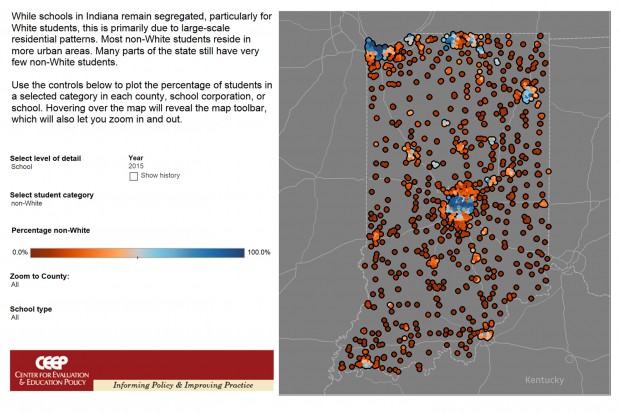New Study Finds High Levels Of Segregation In Indiana Schools
A new study shows Indiana’s schools are segregated by race and income, something that’s true across the state.
The study comes from Indiana University’s Center for Evaluation & Education Policy, and focuses on how students from different races and economic backgrounds intersect.
The state is seeing a dramatic increase in minority students. For example, the number of Latino students attending Indiana schools has grown more than 500 percent since 1988. But these growing minority groups don’t mean schools are getting more diverse.
One finding is that the average black student in the state goes to schools where 68 percent of the student population is also non-white students. That’s compared to white students who on average attend schools where 19 percent of the school is non-white.
Jodi Moon is a researcher who worked on the study, and says the report found black families are mostly concentrated in more urban areas like Indianapolis, Fort Wayne and Gary, while Latino families are more spread throughout the state.
“The changing demographics of our country, the changing demographics of our state and the inequities we see are important conversations to be looking at,” Moon says. “This data enables those conversations to get started.”
Moon says the segregation taking place in rural parts of the state is based on family income levels, with more low-income families attending school together.
The study doesn’t consider whether segregation affects students’ academic or social performance. Moon says she hopes the data prompts more people to ask that question.
“I recognize that some people are looking for solutions, and I think that varies greatly depending on the region and geography in terms of what the opportunities are,” she says. “But really the first step is to know what enrollment patterns are occurring and evaluate what kind of possibilities there are.”
